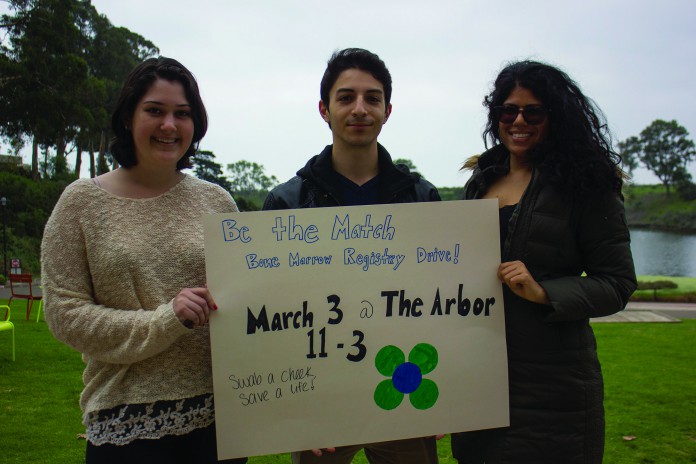Tara Ahi
Every four minutes, somebody—children and adults alike—is diagnosed with a blood cancer such as leukemia or lymphoma, and thousands need marrow transplants to survive. This extends to a host of other life-threatening diseases, but 70 percent of patients do not have a matching donor in their family. It is then that patients may turn to Be the Match and its registry of over 11 million volunteers, who have elected to donate bone marrow, for help.
Be the Match is an organization committed to helping patients get life-saving transplants through registries, research, patient support, and education, and the University of California, Santa Barbara chapter of Be the Match has been reactivated this quarter. There is a continuous call for volunteers to join the registry and elect to help when matched up with someone, and UCSB’s Be the Match is holding its first bone marrow registry drive on March 3 from 11 AM to 3 PM at the Arbor.
Be the Match On Campus is the grassroots efforts of chapters all around the country led by students with the goal to “raise funds, log volunteer hours, raise awareness about Be the Match at campus events and in class, and create cheaper sustainability by voting in officers each spring for the following year,” according to their website. Just through Be the Match On Campus, over 7,500 donors have been added to the registry and over $40,000 has been raised for the cause.
Arian Mostofi, Christina Eliopoulos, and Hitashi Bansal make up the executive board of UCSB’s chapter. After the registry drive, they plan to host fundraisers to raise money and awareness for the club and attract more volunteers, Mostofi said. There has been further support from other groups on campus who are interested in collaborating on projects.
“It spoke to me because there are an enormous number of people who are in desperate need of a transplant but are unable to find a donor,” said Bansal. “One of the missions of the club is to get people from minority groups to donate, as people who need transplants are much more likely to find a match from someone from the same ethnic background as they are. As an ethnic woman myself, I think that’s really important.”
The process is quick, painless and free. At registry drives, all that is required is a signed consent form and a cheek swab. It is open to anyone between the ages of 18- and 44-years-old, and renewing your entry is not necessary—you stay in the registry until 61 years of age. If you happen to be a match for a patient at some point, you get a call. Be the Match provides one-on-one support throughout each step of the transplant journey.
“I needed a bone marrow transplant myself, and found my donor with Be the Match,” Eliopoulos said. “I was lucky enough to find a match, and I want to help as many other searching transplant recipients find their match too.”
The organization began with a family in need. When the 10-year-old daughter of Dr. Robert Graves and his wife Sherry was diagnosed with leukemia, they agreed to try the first ever bone marrow transplant from an unrelated donor, according to the official website of Be the Match. The transplant took place in 1979 and was a success, prompting Graves to extend the same hope to other families. They received support from other patients, doctors, Congress, and funding from the U.S. Navy, and they were able to create the first national bone marrow registry. In the first year alone, 100,000 people registered. The organization has gone beyond and been a huge part of groundbreaking research to find answers for these diseases. For example, in 2004 a partnership was established with the Medical College of Wisconsin to create the research branch of the organization, the Center for International Blood and Marrow Transplant Research.
Over 61,000 marrow and cord blood transplants have been made possible, and the underlying message of the organization is that ordinary people play a significant role in the treatment and cure for blood cancer. To learn more, go to bethematch.org.











